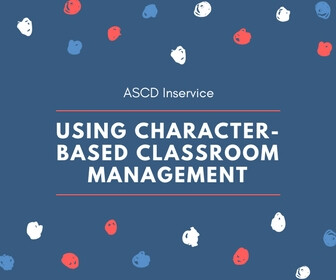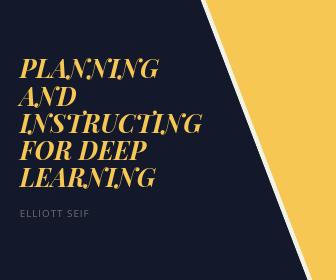To be partners in education, parents must have a good grasp on their children’s learning and its progression. Traditionally, report cards have been the only official feedback on student learning that parents saw in their homes. With many states adopting their own content and learning standards, however, a growing number of schools have been developing standards-based report cards in hopes that they will keep families better informed about their students’ learning. Instead of usual letter grades, marks that indicate mastery of the skills are frequently used.
As with everything new, there is a learning curve for school administrators, teachers, parents, and learners, but it is important to realize that while the idea of no grades has a lot of merit, what replaces the grades and how student learning is communicated can greatly affect parents’ and students’ engagement, and consequently, learning.
Common Misconceptions
There is a lot of variety in how standards-based reports are done from district to district, but there are a few common misconceptions that often hinder the effectiveness of learning feedback and can leave families in the dark.
Misconception 1 – More is Better
In hopes to be as thorough as possible, many schools overload their report cards with sub-categories pertaining to each standard. An overwhelming amount of information and variations in a student’s mastery in each sub-category make it very difficult for parents and learners to understand their overall progress towards mastery of a particular standard.
What may make it even more confusing is how these standards and sub-categories are described in a document. For instance, in a 5th-grade report card, one standard in mathematics is listed as “Mathematician uses developed number sense when working with multiplication and division.” To most parents, “developed number sense” tells very little. To take this further, there are five sub-categories under this standard. “Mathematician selects and accurately applies appropriate strategies to estimate and mentally calculate products and quotients” is one example. What exactly “appropriate strategies” might be and how they are selected are unclear.
To do a little math, if there are five standards in mathematics and each is broken down into five sub-categories, this amounts to 25 vaguely phrased expectations and corresponding marks. A report card becomes very long and unclear where a child is on his or her way towards mastery.
Misconception 2 – Parents Will Put It All Together
Many schools are moving towards a learning feedback system, continuously supplying families with worksheets, or similar materials, demonstrating children’s work on specific standards. It is also commonly assumed that since parents see these materials over a few months, they should be able to connect this prior knowledge to what is shown in report cards. The truth is, however, that this is unlikely to happen.
Frequently, working, education-removed parents monitor their children’s learning on a day-to-day basis and provide help with a concrete task when it is required. There are also extracurricular activities, family engagements, and their own work responsibilities. Most parents do not have the capacity to retain and classify in 25 sub-categories everything that children bring home in order to appropriately apply it to the standards and marks appearing in a report card. A report card should not be a puzzle.
Misconception 3 – The Purpose of a Report Card is To Provide Information
A lot of district leaders see the purpose of learning feedback in providing parents (and learners) with the understanding of a child’s learning progress—i.e. where a child stands in his or her advancement towards mastery of a particular standard. This, however, should only be a start. Parents, as partners in education of their children, have to be expected to take action based on this information. Thus, consideration has to be given to the action a learning feedback document should inspire in parents. If district and school administrators entertain this idea, their reporting documents can become significantly more telling.
A Story of Learning
Parents need to understand their children’s progress in order to help them improve their learning and motivate them to excel further. This means that a report card or document should provide clear evidence of a student’s growth and offer some indicators of where a child stands at this time in his or her journey towards the standard mastery expectations. In other words, if a standard is expected to be mastered by the end of April, in February, parents need to know whether a child is making a sufficient progress to meet this goal, has already reached it and requires something more challenging, or needs help.
To accomplish this, a learning feedback document:
- Should limit a number of sub-categories for each standard. 2-3 clearly stated sub-categories for each standard should be sufficient.
- Focus on a child’s progression in mastering the same part of a standard from the day it was first introduced and assessed to the point when the document was created; this might mean a few marks for each standard’s sub-category in each report card or a simple continuum graphic with hash marks.
- Contain a prediction: provide occasional longitudinal reporting – a progression measured in reverse from the mastery of a standard. This is a prediction whether a student will get this mastery on time and whether a child is progressing at a good rate.
- Consider individual growth: provide benchmark for individual growth – a judgment about whether a student’s current performance aligns with expectations for that particular student at that time. If a student is near a standard’s mastery in October, the expectation for this student might be achieving the state of mastery by January, not April.
- Show ways to grow into mastery: differentiate between proficiency and mastery. Indicate how a student who has achieved proficiency can grow further.
Of course, it is rather difficult to create one document that can provide all of this information. Therefore, a learning feedback system showing a comprehensive picture of children’s learning growth should be developed. This could be accomplished via learning portfolios that are put together by learners and teachers and accompany a report card for immediate demonstration of evidence of standards’ application. On-line reporting systems that many school districts use to post student schedules, attendance, and grades, could be utilized to keep parents aware of their child’s progress as well. If handled correctly, parent-teacher conferences can also become a great occasion for parents and teachers to talk about a student’s learning journey.
The bottom line, if we believe that every learner is unique and motivated to learn by different factors, we have to take this into consideration not only during instruction but while providing feedback as well. There should be a variety of feedback systems to cater to different needs of learners. One feedback doesn’t fit all.
Arina Bokas, Ph.D., is the editor of Kids’ Standard Magazine and the author of Building Powerful Learning Environments: From Schools to Communities. Connect with Bokas on Twitter.








